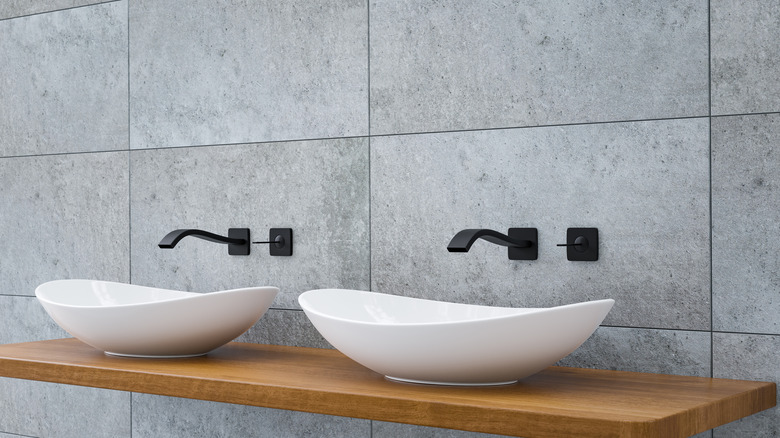How To Paint A Porcelain Tub, Sink Or Toilet
Painting the porcelain fixtures in your bathroom is very similar to painting walls or wooden furniture. Your main goals are to make the paint for porcelain look great and last a long time, which means you'll need to focus on sufficient prep work and high-quality primers and finishers. You'll only spend a small amount of time applying color. Don't forget to wear a respirator.
Start By Cleaning Thoroughly
Start By Cleaning Thoroughly
The paint needs to stick to the surface of the tub, sink or toilet, not to the soap scum or dust that has accumulated over time. If you skip this step, your paint will peel and chip, possibly clogging your drains and definitely requiring a complete do-over. You may need to scrub a few times before it's appropriately clean.
Because this step is so important to the final appearance and performance of the paint, gently scrape a razor blade across the surface of the tub or sink to check for leftover soap scum. If you find some, scrub again.
Sand the Surface for Improved Adhesion
Sand the Surface for Improved Adhesion
Just like you need to sand wood before painting to improve the way paint binds to the surface, you'll need to sand porcelain for the same reason. Use 120-grit sandpaper on the entire surface, inside and out, of the tub, toilet or sink. Then, rinse thoroughly so that your paint has a smooth appearance.
Wait for the Porcelain to Dry
Wait for the Porcelain to Dry
Before you can paint, the porcelain needs to completely dry. Air-drying is best so that you don't leave behind debris from a towel. You can speed up the process by using a hair dryer to aid in evaporation.
In the meantime, you can scrape off any grout from around the tub or sink, then apply painter's tape to protect the drain cover, faucet and wall. Tie a plastic bag around your faucets, including the shower head, to protect the paint from any leaks. Lay drop cloths, and make sure there's plenty of ventilation and air flow in the room for when you begin painting.
Primer and Paint for Porcelain
Primer and Paint for Porcelain
You need primer, paint and finisher for best results. A primer helps the paint go on smooth and assists in the binding process. The paint provides the color, and the finisher helps the paint last as long as possible.
Look for products specifically meant for porcelain fixtures. Latex-based and epoxy products are appropriate for porcelain, but not oil-based or acrylic paint. You can get roll-on or spray-on paint for porcelain based on your personal preference.
Be sure to follow the instructions on the specific products you choose regarding how to effectively apply them and how long to let them dry before moving on to the next step and using the fixture. You can opt to add a non-slip product to the paint or finisher when painting the floor of a bathtub.
Special Consideration for Toilets
Special Consideration for Toilets
Before you can spray paint toilet bowls, you need to remove the water inside them.
First, go ahead and scrub the toilet clean so that you can flush it to rinse away the cleaner. Then, fill a large bucket with water and pour all of it into the toilet to force-flush the toilet without prompting the toilet to refill. There will be a little bit of water left over, but you can soak this up with an absorbent towel.
Caring for Your Painted Bathroom Fixtures
Caring for Your Painted Bathroom Fixtures
You don't want the bathtub, sink or toilet seat paint to chip away after your hard work, so be sure to use the correct cleaning products for long-lasting results. Avoid using any abrasive cleaning products on paint for porcelain. Instead, opt for spray-on cleaners that can be rinsed off or wiped away with a soft cloth.
